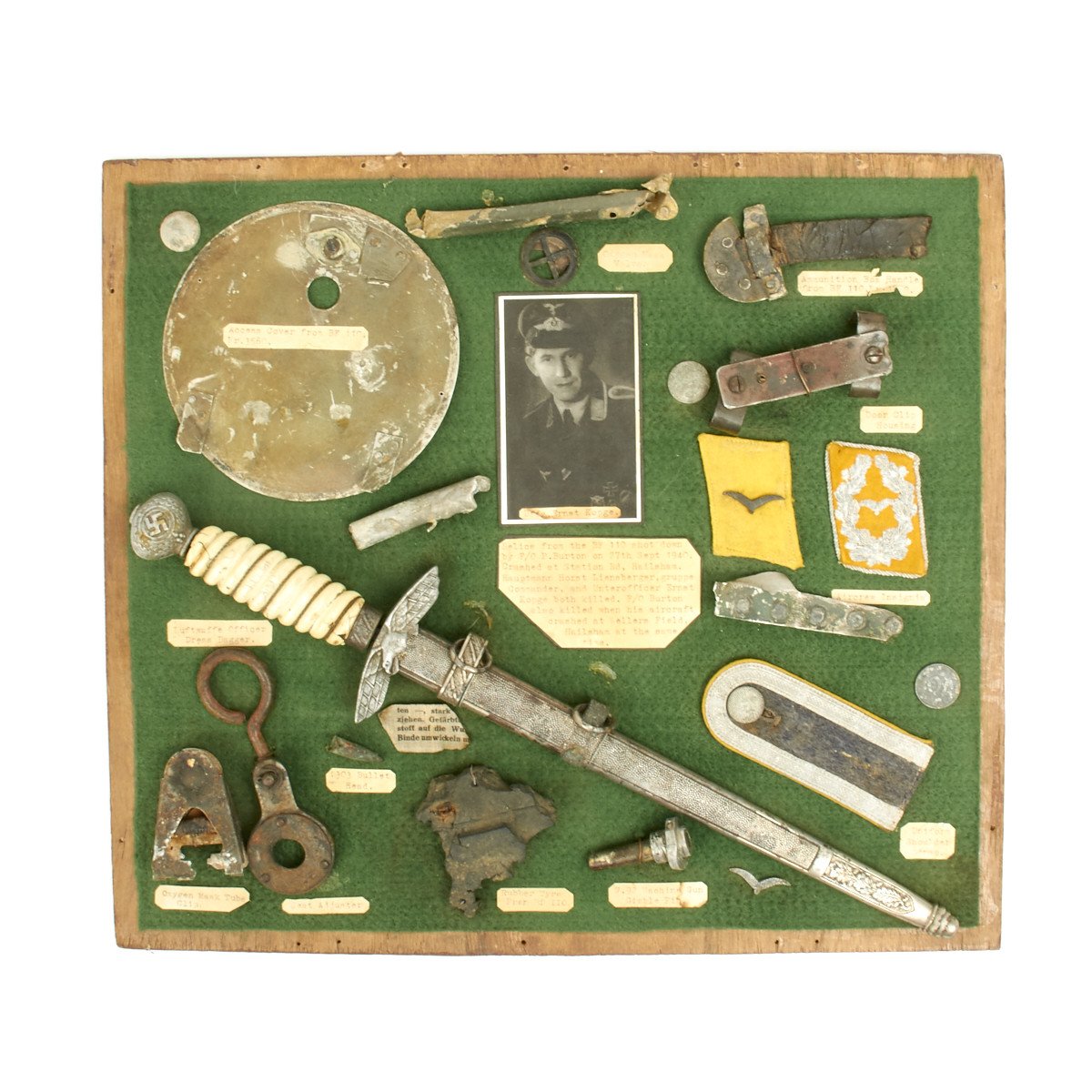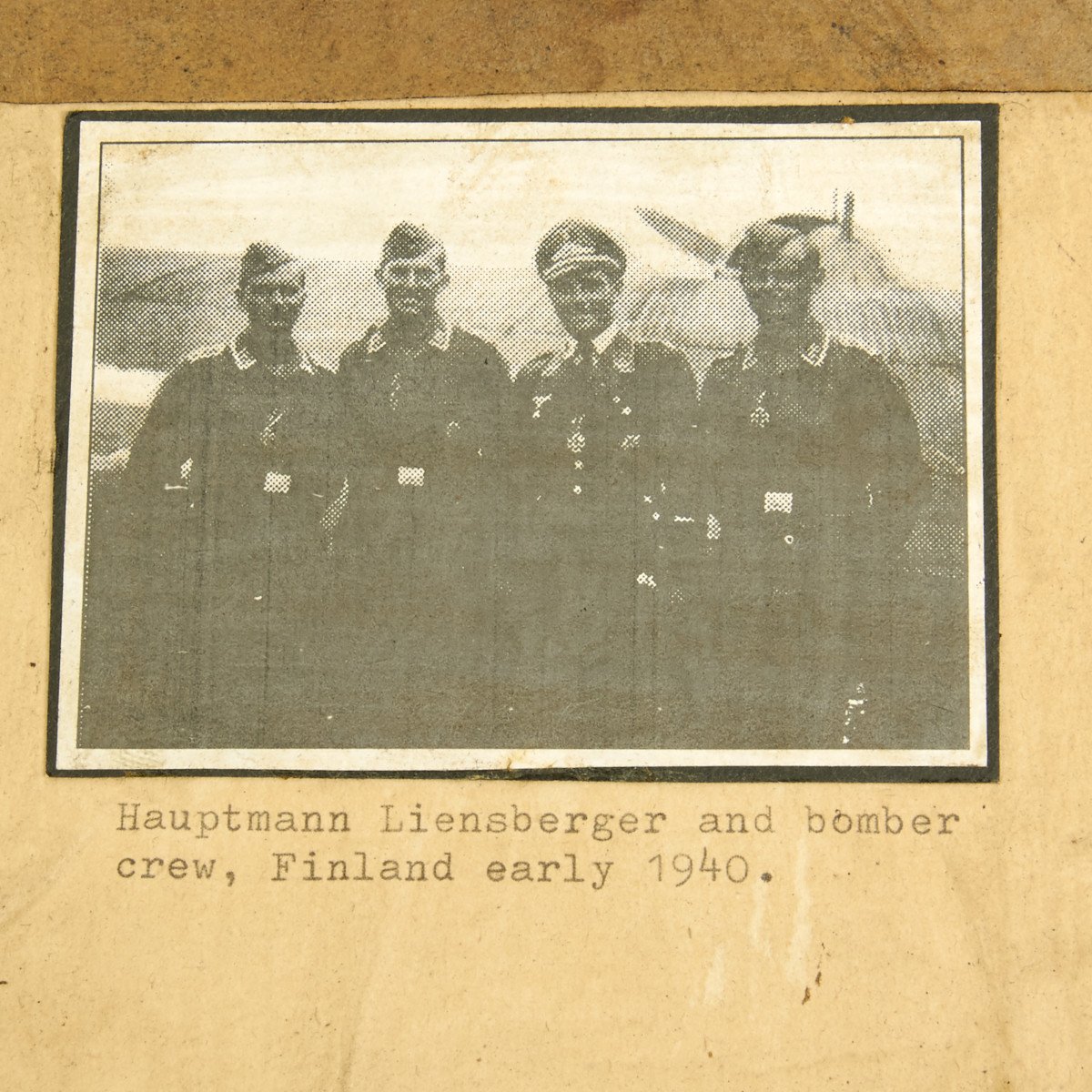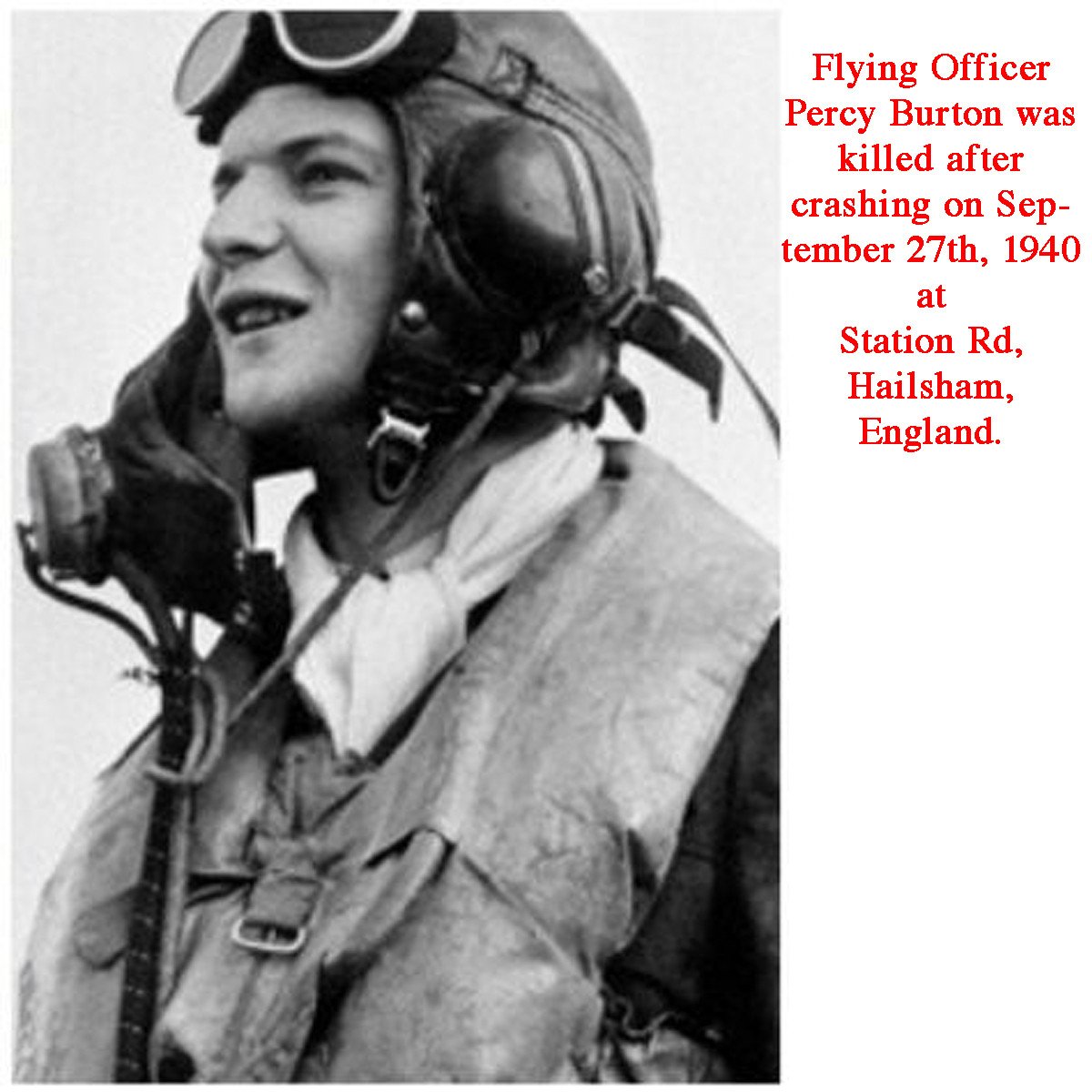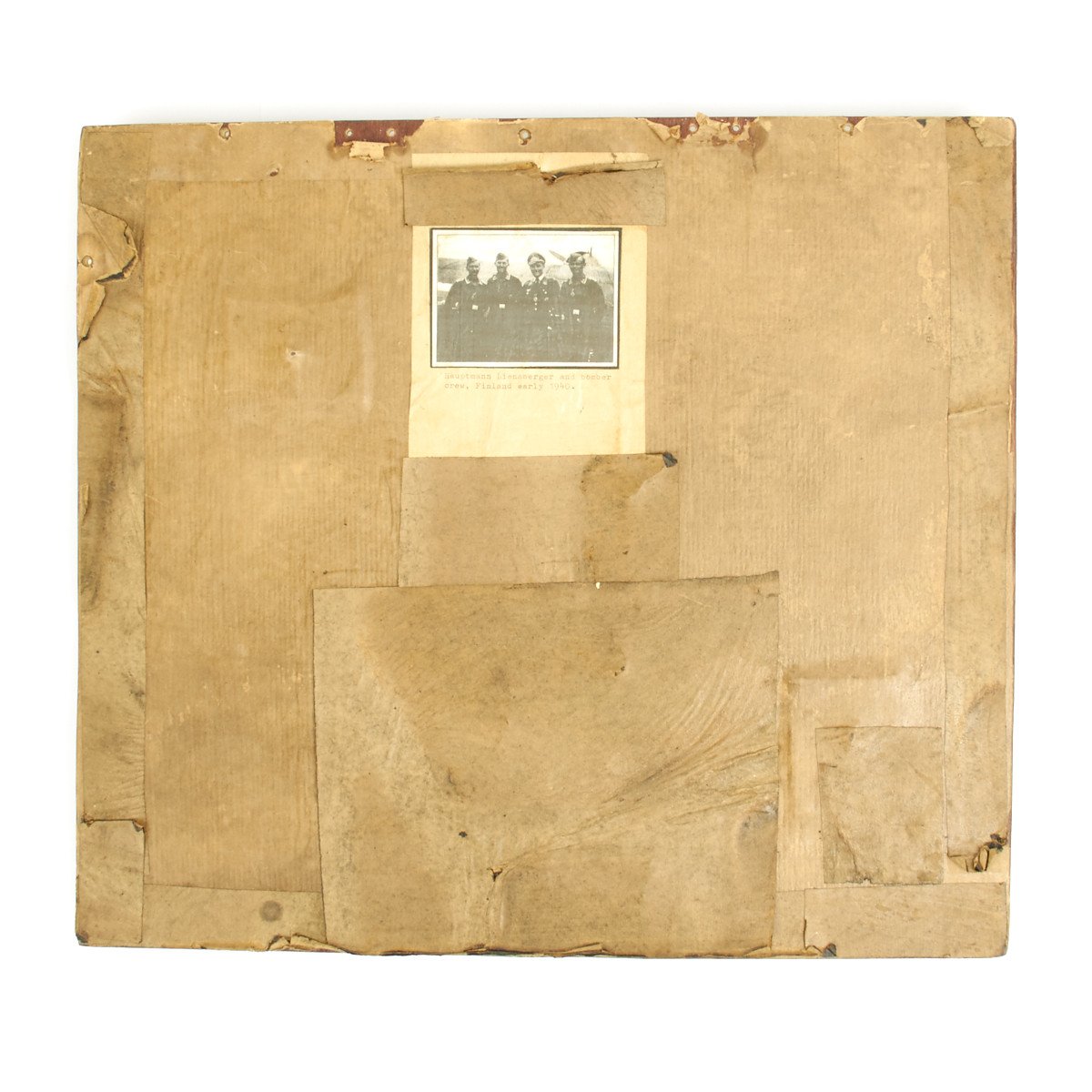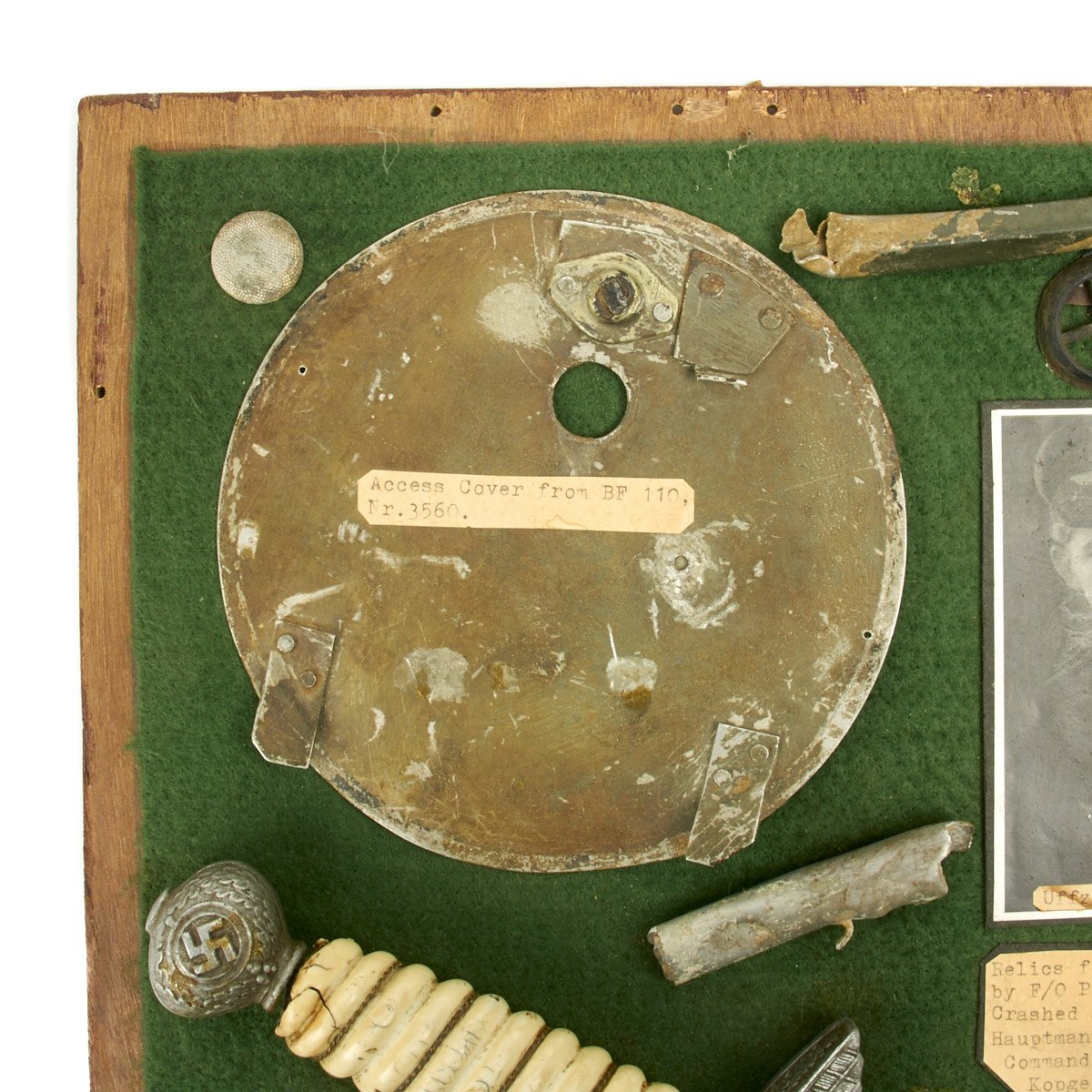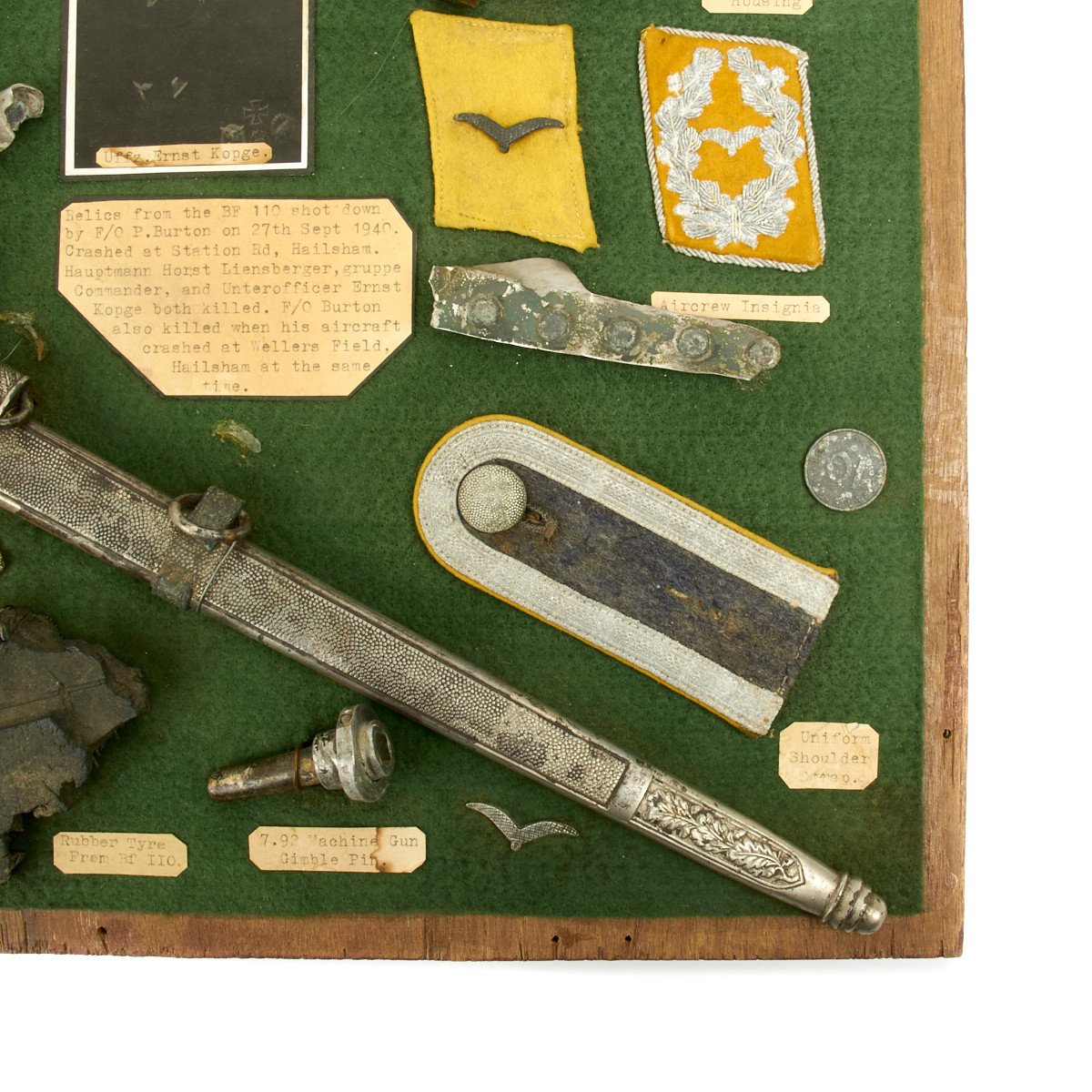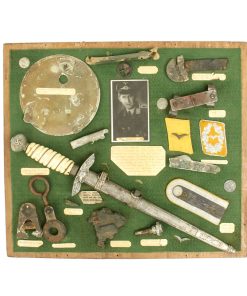Original German WWII Luftwaffe Downed Me110 Grouping – Battle of Britain Original Items
$ 1.895,00 $ 473,75
Original Items: One-of-a-kind set. The Battle of Britain (German: die Luftschlacht um England, literally “Air battle for England”) was air combat during the Second World War, when the Royal Air Force (RAF) defended the United Kingdom against the German Air Force (Luftwaffe) attacks from the end of June 1940. It is described as the first major campaign fought entirely by air forces. The British officially recognize its duration as from 10 July until 31 October 1940 that overlaps with the period of large-scale night attacks known as the Blitz.
This incredible collection board comes from a downed Messerschmitt Bf 110 that was shot down by Flying officer Percy Burton on September 27th, 1940 and crashed at Station Rd, Hailsham, England.
September 27th 1940 – F/O Percy Burton of No.249 Squadron in Hurricane, V6883, was above and behind the Me110. Burton banked, suddenly, and made what appeared to be an attack. Both machines lurched and an object spun away. The tail unit of the 110 dropped into a field, followed by the rest of the aircraft. The falling object was the wingtip of Burton’s Hurricane. His aircraft crashed into a huge oak tree on New Barn Farm, throwing its dead pilot clear and burning itself out in a field.
The German airmen he shot down were Hauptmann Horst Liensberger, gruppe commander, and Underofficer Ernst Kopge who were both killed.
The display board was put together just after the war by a eye witness of the crash. We do not know that persons identity, but all facts about the story check out as do all the parts on the board themselves. The items include:
Photo of Ernst Kopge
Access cover of Me110, Nr. 3560
Oxygen Mask Valve
Ammunition box tab
Door clip housing marked Ln27855
2nd Model Luftwaffe officer dagger
German Luftwaffe officer collar tab
German Luftwaffe officer epaulette (shoulder board)
Oxygen Mask Tube Clip
Seat Adjuster
Rubber of tire from Me110
7.92 MG gimble pin
German WWII coin 10 Reichs pfennig”
Various metal scraps
Uniform buttons
Reverse of board has photo of Hauptmann Horst Liensberger with crew in Finland 1940
The board is felt backed and measures 14.5 W x 16.5 H. This is a one-of-a-kind set with wonderful provenance and evidence of an incredible dog fight ending in tragedy for both the German crew and the British fighter pilot defending his homeland from the German blitz.
The Messerschmitt Bf 110, often (erroneously) called Me 110, was a twin-engine heavy fighter (ZerstörerGerman for “Destroyer”) and fighter-bomber (Jagdbomber or Jabo) developed in NSDAP Germany in the 1930s and used by the Luftwaffe and others during World War II. Hermann Göring was a proponent of the Bf 110. It was armed with two MG FF 20 mm cannons, four 7.92 mm (.312 in) MG 17 machine guns, and one 7.92 mm (.312 in) MG 15 machine gun or twin-barrel MG 81Z for defense. Development work on an improved type to replace the Bf 110, the Messerschmitt Me 210 began before the war started, but its teething troubles from its aerodynamics resulted in the Bf 110 soldiering on until the end of the war in various roles, alongside its replacements, the Me 210 and the significantly improved Me 410 Hornisse.
The Bf 110 served with considerable initial success in the early campaigns, the Polish, Norwegian and Battle of France. The primary weakness of the Bf 110 was its lack of agility in the air, although this could be mitigated with the correct tactics. This weakness was exploited when flying as close escort to German bombers during the Battle of Britain. When British bombers began targeting German territory with nightly raids, some Bf 110-equipped units were withdrawn and redeployed as night fighters, a role to which the aircraft was well suited. After the Battle of Britain the Bf 110 enjoyed a successful period as an air superiority fighter and strike aircraft in other theaters, and defended Germany from strategic air attack by day against the USAAF’s 8th Air Force, until a major change in American fighter tactics rendered them increasingly vulnerable to developing American air supremacy over the Reich as 1944 began.
During the Balkans Campaign, North African Campaign and on the Eastern Front, it rendered valuable ground support to the German Army as a potent fighter-bomber. Later in the war, it was developed into a formidable radar-equipped night fighter, becoming the major night-fighting aircraft of the Luftwaffe. Most of the German night fighter aces flew the Bf 110 at some point during their combat careers, and the top night fighter ace of all time, Major Heinz-Wolfgang Schnaufer, flew it exclusively and claimed 121 victories in 164 combat missions.
Fast Shipping with Professional Packaging
Thanks to our longstanding association with UPS FedEx DHL, and other major international carriers, we are able to provide a range of shipping options. Our warehouse staff is expertly trained and will wrap your products according to our exact and precise specifications. Prior to shipping, your goods will be thoroughly examined and securely secured. We ship to thousands clients each day across multiple countries. This shows how we're dedicated to be the largest retailer on the internet. Warehouses and distribution centres can be located throughout Europe as well as the USA.
Note: Orders with more than one item will be assigned a processing date depending on the item.
Before shipping before shipping, we'll conduct a thorough inspection of the items you have ordered. Today, the majority of orders will be delivered within 48 hours. The delivery time will be between 3-7 days.
Returns
The stock is dynamic and we cannot completely manage it because multiple stakeholders are involved, including our factory and warehouse. So the actual stock may alter at any time. It's possible that you may not receive your order once the order has been made.
Our policy is valid for a period of 30 days. If you don't receive the product within 30 days, we are not able to issue a refund or an exchange.
You can only return an item if it is unused and in the same state as the day you received it. You must have the item in its original packaging.
Related products
Uncategorized
Uncategorized
Uncategorized
Uncategorized
Uncategorized
Uncategorized
Uncategorized
Uncategorized
Uncategorized
Uncategorized
Uncategorized
Australian WWII Owen MK1 Machine Carbine SMG Custom Fabricated Replica with Sling Original Items
Uncategorized
Uncategorized
Uncategorized
Uncategorized
Armoured Fighting Vehicles of the World: AFVs of World War One (Hardcover Book) New Made Items
Uncategorized
Band of Brothers ORIGINAL GERMAN WWII Le. F.H. 18 10.5cm ARTILLERY PIECE Original Items
Uncategorized
